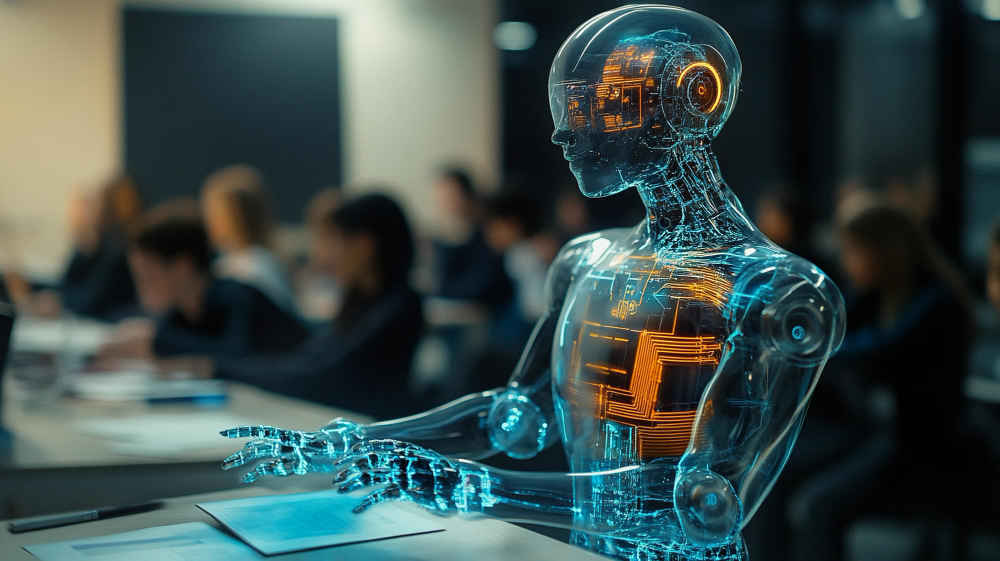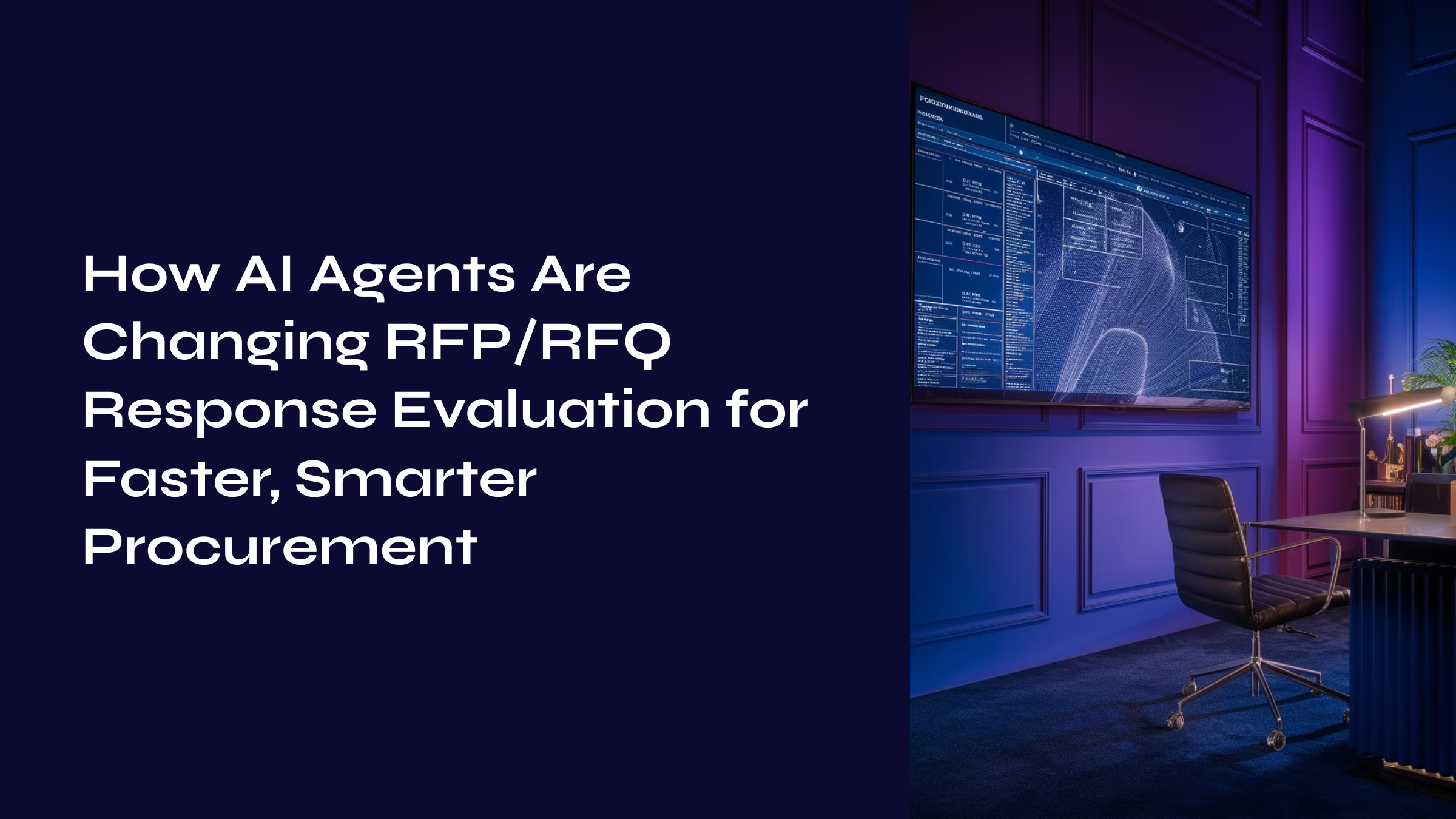Introduction:
Generative AI is rapidly transforming how we interact with technology. From creating realistic images to drafting complex texts, its applications are vast and varied. But what exactly is Generative AI, and why is it generating so much buzz? In this comprehensive guide, we’ll delve into the evolution, benefits, challenges, and future of Generative AI, and how advansappz can help you harness its power.
What is Generative AI?

Generative AI, short for Generative Artificial Intelligence, refers to a category of AI technology that can create new content, ideas, or solutions by learning from existing data. Unlike traditional AI, which primarily focuses on analyzing data, making predictions, or automating routine tasks, Generative AI has the unique capability to produce entirely new outputs that resemble human creativity.
Let’s Break It Down:
Imagine you ask an AI to write a poem, create a painting, or design a new product. Generative AI models can do just that. They are trained on vast amounts of data—such as texts, images, or sounds—and use complex algorithms to understand patterns, styles, and structures within that data. Once trained, these models can generate new content that is similar in style or structure to the examples they’ve learned from.
The Evolution of Generative AI Technology: A Historical Perspective:

Generative AI, as we know it today, is the result of decades of research and development in artificial intelligence and machine learning. The journey from simple algorithmic models to the sophisticated AI systems capable of creating art, music, and text is fascinating. Here’s a look at the key milestones in the evolution of Generative AI technology.
- Early Foundations (1950s – 1980s):
- 1950s: Alan Turing introduced the concept of AI, sparking initial interest in machines mimicking human intelligence.
- 1960s-1970s: Early generative programs created simple poetry and music, laying the groundwork for future developments.
- 1980s: Neural networks and backpropagation emerged, leading to more complex AI models.
- Rise of Machine Learning (1990s – 2000s):
- 1990s: Machine learning matured with algorithms like Hidden Markov Models (HMMs) and Gaussian Mixture Models (GMMs) for data generation.
- 2000s: Advanced techniques like support vector machines and neural networks paved the way for practical generative models.
- Deep Learning Revolution (2010s):
- 2014: Introduction of Generative Adversarial Networks (GANs) revolutionized image and text generation.
- 2015-2017: Recurrent Neural Networks (RNNs) and Transformers enhanced the quality and context-awareness of AI-generated content.
- Large-Scale Models (2020s and Beyond):
- 2020: OpenAI’s GPT-3 showcased the power of large-scale models in generating coherent and accurate text.
- 2021-2022: DALL-E and Stable Diffusion demonstrated the growing capabilities of AI in image generation, expanding the creative possibilities.
The journey of Generative AI from simple models to advanced, large-scale systems reflects the rapid progress in AI technology. As it continues to evolve, Generative AI is poised to transform industries, driving innovation and redefining creativity.
Examples of Generative AI Tools:

- OpenAI’s GPT (e.g., GPT-4)
- What It Does: Generates human-like text for a range of tasks including writing, translation, and summarization.
- Use Cases: Content creation, code generation, and chatbot development.
- DALL·E
- What It Does: Creates images from textual descriptions, bridging the gap between language and visual representation.
- Use Cases: Graphic design, advertising, and concept art.
- MidJourney
- What It Does: Produces images based on text prompts, similar to DALL·E.
- Use Cases: Art creation, visual content generation, and creative design.
- DeepArt
- What It Does: Applies artistic styles to photos using deep learning, turning images into artwork.
- Use Cases: Photo editing and digital art.
- Runway ML
- What It Does: Offers a suite of AI tools for various creative tasks including image synthesis and video editing.
- Use Cases: Video production, music creation, and 3D modeling.
- ChatGPT
- What It Does: Engages in human-like dialogue, providing responses across a range of topics.
- Use Cases: Customer support, virtual assistants, and educational tools.
- Jasper AI
- What It Does: Generates marketing copy, blog posts, and social media content.
- Use Cases: Marketing and SEO optimization.
- Copy.ai
- What It Does: Assists in creating marketing copy, emails, and blog posts.
- Use Cases: Content creation and digital marketing.
- AI Dungeon
- What It Does: Creates interactive, text-based adventure games with endless story possibilities.
- Use Cases: Entertainment and gaming.
- Google’s DeepDream
- What It Does: Generates dream-like, abstract images from existing photos.
- Use Cases: Art creation and visual experimentation.
Why is Generative AI Important?

Generative AI is a game-changer in how machines can mimic and enhance human creativity. Here’s why it matters:
- Creativity and Innovation: It pushes creative boundaries by generating new content—whether in art, music, or design—opening new avenues for innovation.
- Efficiency and Automation: Automates complex tasks, saving time and allowing businesses to focus on strategic goals while maintaining high-quality output.
- Personalization at Scale: Creates tailored content, enhancing customer engagement through personalized experiences.
- Enhanced Problem-Solving: Offers multiple solutions to complex problems, aiding fields like research and development.
- Accessibility to Creativity: Makes creative tools accessible to everyone, enabling even non-experts to produce professional-quality work.
- Transforming Industries: Revolutionizes sectors like healthcare and entertainment by enabling new products and experiences.
- Economic Impact: Drives global innovation, productivity, and creates new markets, boosting economic growth.
Generative AI is crucial for enhancing creativity, driving efficiency, and transforming industries, making it a powerful tool in today’s digital landscape. Its impact will continue to grow, reshaping how we work, create, and interact with the world.
Generative AI Models and How They Work:

Generative AI models are specialized algorithms designed to create new data that mimics the patterns of existing data. These models are at the heart of the AI’s ability to generate text, images, music, and more. Here’s an overview of some key types of generative AI models:
- Generative Adversarial Networks (GANs):
- How They Work: GANs consist of two neural networks—a generator and a discriminator. The generator creates new data, while the discriminator evaluates it against real data. Over time, the generator improves at producing realistic content that can fool the discriminator.
- Applications: GANs are widely used in image generation, creating realistic photos, art, and even deepfakes. They’re also used in tasks like video generation and 3D model creation.
- Variational Autoencoders (VAEs):
- How They Work: VAEs are a type of autoencoder that learns to encode input data into a compressed latent space and then decodes it back into original-like data. Unlike regular autoencoders, VAEs generate new data by sampling from the latent space.
- Applications: VAEs are used in image and video generation, as well as in tasks like data compression and anomaly detection.
- Transformers:
- How They Work: Transformers use self-attention mechanisms to process input data, particularly sequences like text. They excel at understanding the context of data, making them highly effective in generating coherent and contextually accurate text.
- Applications: Transformers power models like GPT (Generative Pre-trained Transformer) for text generation, BERT for natural language understanding, and DALL-E for image generation from text prompts.
- Recurrent Neural Networks (RNNs) and LSTMs:
- How They Work: RNNs and their advanced variant, Long Short-Term Memory (LSTM) networks, are designed to process sequential data, like time series or text. They maintain information over time, making them suitable for tasks where context is important.
- Applications: These models are used in text generation, speech synthesis, and music composition, where maintaining context over long sequences is crucial.
- Diffusion Models:
- How They Work: Diffusion models generate data by simulating a process where data points are iteratively refined from random noise until they form recognizable content. These models have gained popularity for their ability to produce high-quality images.
- Applications: They are used in image generation and have shown promising results in generating highly detailed and realistic images, such as those seen in the Stable Diffusion model.
- Autoregressive Models:
- How They Work: Autoregressive models generate data by predicting each data point (e.g., pixel or word) based on the previous ones. This sequential approach allows for fine control over the generation process.
- Applications: These models are used in text generation, audio synthesis, and other tasks that benefit from sequential data generation.
Generative AI models are diverse and powerful, each designed to excel in different types of data generation. Whether through GANs for image creation or Transformers for text, these models are revolutionizing industries by enabling the creation of high-quality, realistic, and creative content.
What Are the Benefits of Generative AI?

Generative AI brings numerous benefits that are revolutionizing industries and redefining creativity and problem-solving:
- Enhanced Creativity: AI generates new content—images, music, text—pushing creative boundaries in various fields.
- Increased Efficiency: By automating complex tasks like content creation and design, AI boosts productivity.
- Personalization: AI creates tailored content, improving customer engagement in marketing.
- Cost Savings: Automating production processes reduces labor costs and saves time.
- Innovation: AI explores multiple solutions, aiding in research and development.
- Accessibility: AI democratizes creative tools, enabling more people to produce professional-quality content.
- Improved Decision-Making: AI offers simulations and models for better-informed choices.
- Real-Time Adaptation: AI quickly responds to new information, ideal for dynamic environments.
- Cross-Disciplinary Impact: AI drives innovation across industries like healthcare, media, and manufacturing.
- Creative Collaboration: AI partners with humans, enhancing the creative process.
Generative AI’s ability to innovate, personalize, and improve efficiency makes it a transformative force in today’s digital landscape.
What Are the Limitations of Generative AI?

Generative AI, while powerful, has several limitations:
- Lack of Understanding: Generative AI models generate content based on patterns in data but lack true comprehension. They can produce coherent text or images without understanding their meaning, leading to errors or nonsensical outputs.
- Bias and Fairness Issues: AI models can inadvertently learn and amplify biases present in training data. This can result in biased or discriminatory outputs, particularly in areas like hiring, law enforcement, and content generation.
- Data Dependence: The quality of AI-generated content is heavily dependent on the quality and diversity of the training data. Poor or biased data can lead to inaccurate or unrepresentative outputs.
- Resource-Intensive: Training and running large generative models require significant computational resources, including powerful hardware and large amounts of energy. This can make them expensive and environmentally impactful.
- Ethical Concerns: The ability of generative AI to create realistic content, such as deepfakes or synthetic text, raises ethical concerns around misinformation, copyright infringement, and privacy.
- Lack of Creativity: While AI can generate new content, it lacks true creativity and innovation. It can only create based on what it has learned, limiting its ability to produce genuinely original ideas or solutions.
- Context Sensitivity: Generative AI models may struggle with maintaining context, particularly in long or complex tasks. They may lose track of context, leading to inconsistencies or irrelevant content.
- Security Risks: AI-generated content can be used maliciously, such as in phishing attacks, fake news, or spreading harmful information, posing security risks.
- Dependence on Human Oversight: AI-generated content often requires human review and refinement to ensure accuracy, relevance, and appropriateness. Without human oversight, the risk of errors increases.
- Generalization Limits: AI models trained on specific datasets may struggle to generalize to new or unseen scenarios, leading to poor performance in novel situations.
While generative AI offers many advantages, understanding its limitations is crucial for responsible and effective use.
Generative AI Use Cases Across Industries:

Generative AI is transforming various industries by enabling new applications and improving existing processes. Here are some key use cases across different sectors:
- Healthcare:
- Drug Discovery: Generative AI can simulate molecular structures and predict their interactions, speeding up the drug discovery process and identifying potential new treatments.
- Medical Imaging: AI can generate enhanced medical images, assisting in diagnosis and treatment planning by improving image resolution and identifying anomalies.
- Personalized Medicine: AI models can generate personalized treatment plans based on patient data, optimizing care and improving outcomes.
- Entertainment & Media:
- Content Creation: Generative AI can create music, art, and writing, offering tools for artists and content creators to generate ideas, complete projects, or enhance creativity.
- Gaming: In the gaming industry, AI can generate realistic characters, environments, and storylines, providing dynamic and immersive experiences.
- Deepfakes and CGI: AI is used to generate realistic videos and images, creating visual effects and digital characters in films and advertising.
- Marketing & Advertising:
- Personalized Campaigns: AI can generate tailored advertisements and marketing content based on user behavior and preferences, increasing engagement and conversion rates.
- Content Generation: Automating the creation of blog posts, social media updates, and ad copy allows marketers to produce large volumes of content quickly and consistently.
- Product Design: AI can assist in generating product designs and prototypes, allowing for rapid iteration and customization based on consumer feedback.
- Finance:
- Algorithmic Trading: AI can generate trading strategies and models, optimizing investment portfolios and predicting market trends.
- Fraud Detection: Generative AI models can simulate fraudulent behavior, improving the accuracy of fraud detection systems by training them on a wider range of scenarios.
- Customer Service: AI-generated chatbots and virtual assistants can provide personalized financial advice and support, enhancing customer experience.
- Manufacturing:
- Product Design and Prototyping: Generative AI can create innovative product designs and prototypes, speeding up the design process and reducing costs.
- Supply Chain Optimization: AI models can generate simulations of supply chain processes, helping manufacturers optimize logistics and reduce inefficiencies.
- Predictive Maintenance: AI can predict when machinery is likely to fail and generate maintenance schedules, minimizing downtime and extending equipment lifespan.
- Retail & E-commerce:
- Virtual Try-Ons: AI can generate realistic images of customers wearing products, allowing for virtual try-ons and enhancing the online shopping experience.
- Inventory Management: AI can generate demand forecasts, optimizing inventory levels and reducing waste by predicting consumer trends.
- Personalized Recommendations: Generative AI can create personalized product recommendations, improving customer satisfaction and increasing sales.
- Architecture & Construction:
- Design Automation: AI can generate building designs and layouts, optimizing space usage and energy efficiency while reducing design time.
- Virtual Simulations: AI can create realistic simulations of construction projects, allowing for better planning and visualization before construction begins.
- Cost Estimation: Generative AI can generate accurate cost estimates for construction projects, improving budgeting and resource allocation.
- Education:
- Content Generation: AI can create personalized learning materials, such as quizzes, exercises, and reading materials, tailored to individual student needs.
- Virtual Tutors: Generative AI can develop virtual tutors that provide personalized feedback and support, enhancing the learning experience.
- Curriculum Development: AI can generate curricula based on student performance data, optimizing learning paths for different educational goals.
- Legal & Compliance:
- Contract Generation: AI can automate the drafting of legal contracts, ensuring consistency and reducing the time required for legal document preparation.
- Compliance Monitoring: AI models can generate compliance reports and monitor legal changes, helping organizations stay up-to-date with regulations.
- Case Analysis: Generative AI can analyze past legal cases and generate summaries, aiding lawyers in research and case preparation.
- Energy:
- Energy Management: AI can generate models for optimizing energy use in buildings, factories, and cities, improving efficiency and reducing costs.
- Renewable Energy Forecasting: AI can predict energy generation from renewable sources like solar and wind, optimizing grid management and reducing reliance on fossil fuels.
- Resource Exploration: AI can simulate geological formations to identify potential locations for drilling or mining, improving the efficiency of resource exploration.
Generative AI’s versatility and power make it a transformative tool across multiple industries, driving innovation and improving efficiency in countless applications.
Best Practices in Generative AI Adoption:

If your organization wants to implement generative AI solutions, consider the following best practices to enhance your efforts and ensure a successful adoption.
1. Define Clear Objectives:
- Align with Business Goals: Ensure that the adoption of generative AI is directly linked to specific business objectives, such as improving customer experience, enhancing product design, or increasing operational efficiency.
- Identify Use Cases: Start with clear, high-impact use cases where generative AI can add value. Prioritize projects that can demonstrate quick wins and measurable outcomes.
2. Begin with Internal Applications:
- Focus on Process Optimization: Start generative AI adoption with internal application development, concentrating on optimizing processes and boosting employee productivity. This provides a controlled environment to test outcomes while building skills and understanding of the technology.
- Leverage Internal Knowledge: Test and customize models using internal knowledge sources, ensuring that your organization gains a deep understanding of AI capabilities before deploying them for external applications. This approach enhances customer experiences when you eventually use AI models externally.
3. Enhance Transparency:
- Communicate AI Usage: Clearly communicate all generative AI applications and outputs so users know they are interacting with AI rather than humans. For example, AI could introduce itself, or AI-generated content could be marked and highlighted.
- Enable User Discretion: Transparent communication allows users to exercise discretion when engaging with AI-generated content, helping them proactively manage potential inaccuracies or biases in the models due to training data limitations.
4. Ensure Data Quality:
- High-Quality Data: Generative AI relies heavily on the quality of the data it is trained on. Ensure that your data is clean, relevant, and comprehensive to produce accurate and meaningful outputs.
- Data Governance: Implement robust data governance practices to manage data quality, privacy, and security. This is essential for building trust in AI-generated outputs.
5. Implement Security:
- Set Up Guardrails: Implement security measures to prevent unauthorized access to sensitive data through generative AI applications. Involve security teams from the start to address potential risks from the beginning.
- Protect Sensitive Data: Consider masking data and removing personally identifiable information (PII) before training models on internal data to safeguard privacy.
6. Test Extensively:
- Automated and Manual Testing: Develop both automated and manual testing processes to validate results and test various scenarios that the generative AI system may encounter.
- Beta Testing: Engage different groups of beta testers to try out applications in diverse ways and document results. This continuous testing helps improve the model and gives you more control over expected outcomes and responses.
7. Start Small and Scale:
- Pilot Projects: Begin with pilot projects to test the effectiveness of generative AI in a controlled environment. Use these pilots to gather insights, refine models, and identify potential challenges.
- Scale Gradually: Once you have validated the technology through pilots, scale up your generative AI initiatives. Ensure that you have the infrastructure and resources to support broader adoption.
8. Incorporate Human Oversight:
- Human-in-the-Loop: Incorporate human oversight in the generative AI process to ensure that outputs are accurate, ethical, and aligned with business objectives. This is particularly important in creative and decision-making tasks.
- Continuous Feedback: Implement a feedback loop where human experts regularly review AI-generated content and provide input for further refinement.
9. Focus on Ethics and Compliance:
- Ethical AI Use: Ensure that generative AI is used ethically and responsibly. Avoid applications that could lead to harmful outcomes, such as deepfakes or biased content generation.
- Compliance and Regulation: Stay informed about the legal and regulatory landscape surrounding AI, particularly in areas like data privacy, intellectual property, and AI-generated content.
10. Monitor and Optimize Performance:
- Continuous Monitoring: Regularly monitor the performance of generative AI models to ensure they remain effective and relevant. Track key metrics such as accuracy, efficiency, and user satisfaction.
- Optimize Models: Continuously update and optimize AI models based on new data, feedback, and evolving business needs. This may involve retraining models or fine-tuning algorithms.
11. Collaborate Across Teams:
- Cross-Functional Collaboration: Encourage collaboration between data scientists, engineers, business leaders, and domain experts. A cross-functional approach ensures that generative AI initiatives are well-integrated and aligned with broader organizational goals.
- Knowledge Sharing: Promote knowledge sharing and best practices within the organization to foster a culture of innovation and continuous learning.
12. Prepare for Change Management:
- Change Management Strategy: Develop a change management strategy to address the impact of generative AI on workflows, roles, and organizational culture. Prepare your workforce for the transition by providing training and support.
- Communicate Benefits: Clearly communicate the benefits of generative AI to all stakeholders to build buy-in and reduce resistance to adoption.
13. Evaluate ROI and Impact:
- Measure Impact: Regularly assess the ROI of generative AI projects to ensure they deliver value. Use metrics such as cost savings, revenue growth, customer satisfaction, and innovation rates to gauge success.
- Iterate and Improve: Based on evaluation results, iterate on your generative AI strategy to improve outcomes and maximize benefits.
By following these best practices, organizations can successfully adopt generative AI, unlocking new opportunities for innovation, efficiency, and growth while minimizing risks and challenges.
Concerns Surrounding Generative AI: Navigating the Challenges:

As generative AI technologies rapidly evolve and integrate into various aspects of our lives, several concerns have emerged that need careful consideration. Here are some of the key issues associated with generative AI:
1. Ethical and Misuse Issues:
- Deepfakes and Misinformation: Generative AI can create realistic but fake images, videos, and audio, leading to the spread of misinformation and deepfakes. This can impact public opinion, influence elections, and damage reputations.
- Manipulation and Deception: AI-generated content can be used to deceive people, such as creating misleading news articles or fraudulent advertisements.
2. Privacy Concerns:
- Data Security: Generative AI systems often require large datasets to train effectively. If not managed properly, these datasets could include sensitive personal information, raising privacy issues.
- Inadvertent Data Exposure: AI models might inadvertently generate outputs that reveal private or proprietary information from their training data.
3. Bias and Fairness:
- Bias in Training Data: Generative AI models can perpetuate or even amplify existing biases present in their training data. This can lead to unfair or discriminatory outcomes in applications like hiring, lending, or law enforcement.
- Lack of Diversity: The data used to train AI models might lack diversity, leading to outputs that do not reflect the needs or perspectives of all groups.
4. Intellectual Property and Authorship:
- Ownership of Generated Content: Determining the ownership and rights of AI-generated content can be complex. Questions arise about who owns the intellectual property—the creator of the AI, the user, or the AI itself.
- Infringement Issues: Generative AI might unintentionally produce content that resembles existing works too closely, raising concerns about copyright infringement.
5. Security Risks:
- AI-Generated Cyber Threats: Generative AI can be used to create sophisticated phishing attacks, malware, or other cyber threats, making it harder to detect and defend against malicious activities.
- Vulnerability Exploits: Flaws in generative AI systems can be exploited to generate harmful or unwanted content, posing risks to both individuals and organizations.
6. Accountability and Transparency:
- Lack of Transparency: Understanding how generative AI models arrive at specific outputs can be challenging due to their complex and opaque nature. This lack of transparency can hinder accountability, especially in critical applications like healthcare or finance.
- Responsibility for Outputs: Determining who is responsible for the outputs generated by AI systems—whether it’s the developers, users, or the AI itself—can be problematic.
7. Environmental Impact:
- Energy Consumption: Training large generative AI models requires substantial computational power, leading to significant energy consumption and environmental impact. This raises concerns about the sustainability of AI technologies.
8. Ethical Use and Regulation:
- Regulatory Challenges: There is a need for clear regulations and guidelines to govern the ethical use of generative AI. Developing these frameworks while balancing innovation and control is a significant challenge for policymakers.
- Ethical Guidelines: Establishing ethical guidelines for the responsible development and deployment of generative AI is crucial to prevent misuse and ensure positive societal impact.
While generative AI offers tremendous potential, addressing these concerns is essential to ensuring that its benefits are maximized while mitigating risks. As the technology continues to advance, it is crucial for stakeholders—including developers, policymakers, and users—to work together to address these challenges and promote the responsible use of generative AI.
How advansappz Can Help You Leverage Generative AI:
advansappz specializes in integrating Generative AI solutions to drive innovation and efficiency in your organization. Our services include:
- Custom AI Solutions: Tailored Generative AI models for your specific needs.
- Integration Services: Seamless integration of Generative AI into existing systems.
- Consulting and Strategy: Expert guidance on leveraging Generative AI for business growth.
- Training and Support: Comprehensive training programs for effective AI utilization.
- Data Management: Ensuring high-quality and secure data handling for AI models.
Conclusion:
Generative AI is transforming industries by expanding creative possibilities, improving efficiency, and driving innovation. By understanding its features, benefits, and limitations, you can better harness its potential.
Ready to harness the power of Generative AI? Talk to our expert today and discover how advansappz can help you transform your business and achieve your goals.
Frequently Asked Questions (FAQs):
1. What are the most common applications of Generative AI?
Generative AI is used in content creation (text, images, videos), personalized recommendations, drug discovery, and virtual simulations.
2. How does Generative AI differ from traditional AI?
Traditional AI analyzes and predicts based on existing data, while Generative AI creates new content or solutions by learning patterns from data.
3. What are the main challenges in implementing Generative AI?
Challenges include data quality, ethical concerns, high computational requirements, and potential biases in generated content.
4. How can businesses benefit from Generative AI?
Businesses can benefit from enhanced creativity, increased efficiency, cost savings, and personalized customer experiences.
5. What steps should be taken to ensure ethical use of Generative AI?
Ensure ethical use by implementing bias mitigation strategies, maintaining transparency in AI processes, and adhering to regulatory guidelines and best practices.
















